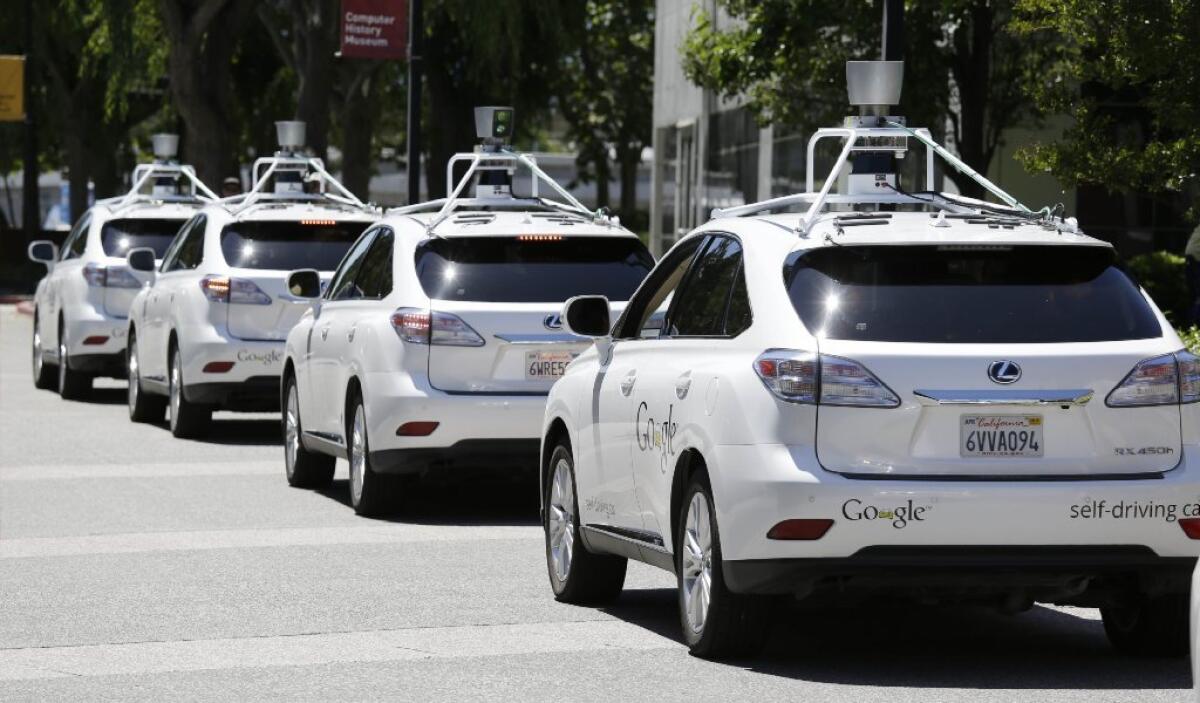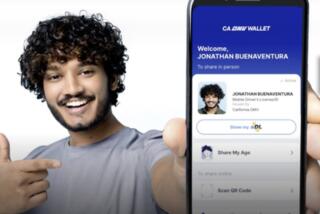Editorial: California isn’t ready for driverless cars

- Share via
The car of the future isn’t quite ready for the present. At least not in California.
A state law passed in 2012 legalized “autonomous vehicles” — otherwise known as driverless cars — and allowed their makers to test them on public roads. The law also directed the state Department of Motor Vehicles to develop — by Jan. 1, 2015 — regulations and protocols to certify that the cars are safe before they are widely operated or sold to the public. But it now appears the DMV will miss that deadline.
DMV officials have found that it’s not easy to develop regulations for a brand-new technology. Autonomous vehicles use GPS and other navigation systems to get from point A to point B, and the cars have sensors to detect and react to situations on the road. The DMV finalized rules for testing driverless cars only in September, and since then seven companies, including Google, Mercedes-Benz and Nissan, have received permits to take their autonomous autos on the road on a trial basis. For safety reasons, the companies are required to have certified personnel in the driver’s seat ready to take control at any time.
As it prepares to write rules for wider use, the DMV has to grapple with more difficult questions. Should autonomous cars be allowed on the road with no one in them capable of taking the wheel — empty, perhaps, or with passengers in the back seat drinking or watching a movie? Should the vehicles be required to have steering wheels and pedals, or will a “stop” button suffice? In theory, driverless cars could significantly reduce the number of collisions, as 90% of accidents are caused by human error. (The Google car won’t text and drive, for example.) What happens, however, if the car malfunctions or causes an accident? Would the carmaker be liable? Would the passenger be liable, even if he or she didn’t operate the vehicle?
There are larger questions, too, about how driverless cars will affect the transportation landscape. The vehicles could allow greater mobility for the elderly and the disabled, who may not drive or have access to mass transit. But they may also have a big impact on how California spends its transportation dollars. There might be renewed demand to build more road lanes to accommodate driverless cars, and less demand to build public transit. Driverless cars could affect development patterns, making far-flung suburbs more attractive for commuters who could nap or work while being whisked to the office in their private vehicles. Whether they slow California’s effort to fight climate change, or provide a greener driving alternative, will depend on how the vehicles are built and operated.
Driverless cars could reshape how Californians live, work and travel, yet there hasn’t been much discussion of what the new world will look like. So, if the DMV needs more time to work out the logistics of getting autonomous cars on the roads, that’s just fine. California still has a lot more work to do before driverless cars should leave the garage.
Follow the Opinion section on Twitter @latimesopinion
More to Read
A cure for the common opinion
Get thought-provoking perspectives with our weekly newsletter.
You may occasionally receive promotional content from the Los Angeles Times.










